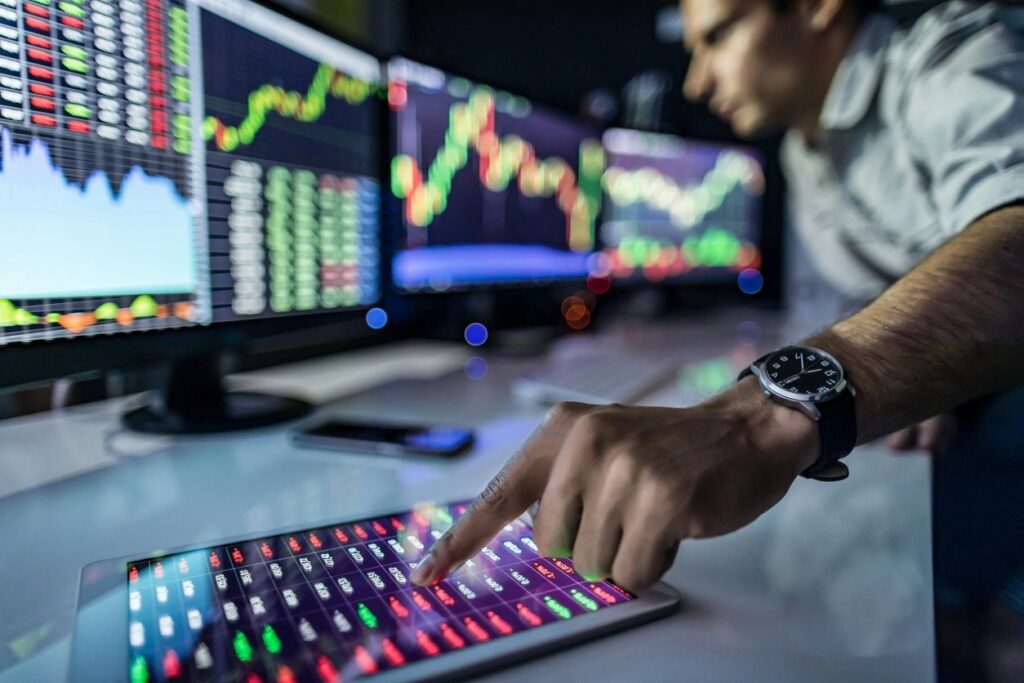“Good investors gather information, put that information into current and historical context, then make sound decisions.”

Financial markets are currently experiencing a uniquely severe correction. Equity markets have taken the brunt of the selling so far, with volatility that has been sharply exaggerated by high speed computer trading, also known as algo-trading. What used to be one percent market moves have become five percent market moves. For the Dow Jones Industrial Average, this translates to thousand-point daily price swings. We last saw algo-trading approaching this scale back in the fourth quarter of 2018. Interestingly, 2019 was totally void of these levels of volatility. But extreme market volatility has exploded in the last four weeks.
The coronavirus COVID-19 has been getting all of the blame for the equity market declines. The viral outbreak was first identified in China in December of 2019. On February 26, as new cases reportedly dropped in China, new cases suddenly increased in Italy, Iran and South Korea. It was officially recognized as a pandemic by the World Health Organization on March 11. But there was actually another culprit responsible for the dramatic market declines.
Oil prices had started the year at $61/barrel, but had fallen to $43/barrel by March 2nd prompting an OPEC summit meeting on March 5th. OPEC agreed to cut production to bolster prices, but Russia rejected the proposal. On Friday, March 6th, Saudi Arabia walked away from negotiations with Russia and the next day initiated a price war with Russia by cutting prices and increasing production. This resulted in a free fall in oil prices and, by March 18th, the price of oil had fallen as low as $20.52/barrel before rebounding to the mid-20’s. These prices are not economically sustainable for Russia, or for the U.S., also an energy exporter.
Either the COVID-19 pandemic or the oil price war could engineer a strong correction. The combination of the two was a perfect storm. While they both escalated at approximately the same time, they could also deescalate at the same time. This creates a very tricky sequence for the institutional investors who obviously are still struggling with managing the volatility associated with algo-trading.
Algo-trading isn’t present all of the time. While it was very evident in 2016 and 2018, there was no evidence of algo-trading in all of 2017 or 2019. An important signature of market corrections associated with algo-trading is the “V-type” recovery. This means that the recovery pattern mirrors the decline. In other words, markets can recover as quickly and as unpredictably as they decline. The most productive method of weathering the storm has been to sit tight, which isn’t fun, but it’s what we’re doing.
The measures that have been adopted by the world community to combat COVID-19 are unprecedented. Accordingly, the impact of these measures on the world’s economies are difficult to predict. We can get a sense of the potential timeline for the pandemic’s effect on the U.S. by studying the timelines of those countries that were earlier affected. In China and South Korea it appeared to take approximately two months for newly reported cases to swell then decline. Estimated timelines for the duration of an oil price war also average about two months. This could result in a bulk of the economic impact on the U.S. occurring in the second quarter, which could avert an economic recession and preserve this bull market.
Recessions and bear markets are traditionally defined by a period of six months. At this juncture, we are one month into a uniquely severe correction. If the U.S. follows the similar two-month timeline referenced above for COVID-19, we could see improvement by the end of April. Equity markets historically anticipate events and a “V-trade” recovery could be fast and furious. When that occurs, we’ll have a better perspective and it will be a much better time to reevaluate portfolios.
Edward D. Foy, Manager, SELECTOR® Money Management, Chief Investment Officer, Foy Financial Services, Inc.